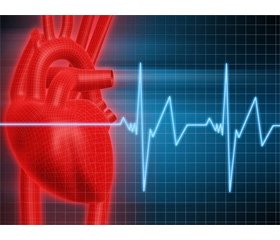Журнал «Здоровье ребенка» 8 (59) 2014
Вернуться к номеру
A 6 minute walk test in adolescents with the circulation organs diseases
Авторы: S.R. Tolmachova, L.F. Bogmat1, V.V. Nikonova - SI "Institute for children and adolescents health care of the NAMS of Ukraine", Kharkiv; T.A. Golovko - V.Karazin Kharkiv National University
Рубрики: Педиатрия/Неонатология
Разделы: Справочник специалиста
Версия для печати
Significant changes that have taken place in recent years in rehabilitation tactics for patients with the diseases of circulation organs require objective information about the functional state of the cardiovascular system and its response to the graduated physical load at the earliest stages of the disease.
Aim of the research - to study the parameters of a 6 minute walk test in adolescents with the diseases of circulation organs.
A 6 minute walk test (6 MWT) was carried out in 56 adolescents aged 13-18 years with myocardial pathology (arrhythmias, secondary and dysplastic cardiomyopathy, and primary AH). 24 patients from this cohort took part in pair tests with 30-minute intervals. The control group consisted of 13 children of the same age without any pathology of the cardiovascular system. Monitoring of the clinical state dynamics as well as the heart rate and blood pressure was carried out in our patients at the initial stage and after the test. Adaptation index (AI) and the rhythm recovery index (RRI) were also estimated in our study.Tests with isometric load were performed to establish the type of diastolic dysfunction. Statistical processing of the materials was carried out on the IBM PC / Pentium 4 using the software package "SPSS 17.0".
All our patients performed both conventional and pair tests without difficulties. No complaints have been registered before carrying out the tests, but after their performance 15.4% of adolescents with a type III diastolic dysfunction of the left ventricle (DDLV) and 7.4% with a type I dysfunction expressed complaints about dyspnea. No one of our patients had arrhythmia, induced by the tests.
Adolescents with the diseases of circulation organs in 6 minutes covered the distance from 406.9 m to 705.6 m, besides, average distance and speed of the walk were less than in the group of their healthy age-mates (580.33 ± 69. 01 m; 1.61 ± 0.19 m / s vs. 718.20 ± 14.14m; 2.00 ± 0.04 m / s, respectively; p <0.05). No significant differences, depending on the type of DDLV, nosology and gender have been revealed regarding the length of the covered distance. An adequate increase in the heart rate after exercise load (+ 20-40%) in the study group has been recorded significantly less often than in the control group (41.1 ± 10.3% vs. 84.6 ± 10.4%; p <0.01). An excessive increase in the heart rate (> 40%) in the course of WT performance has been observed only in adolescents with the circulation organs diseases (21.4 ± 11.8%). According to the results of the pair WT, both in the control and in the study groups the distance, covered by our patients after 30 minutes of repeated walk, exceeded the results of the first test, and persons of the control group after repeated trial covered a much more longer distance (p <0,05).
Individual analysis of the pair test values in our patients has shown some decrease in adaptation reserves in 29.2% of children with myocardial pathology. The RRI in adolescents of the main group comes to 1.26, and in the control group it is 0.91, which testifies to the depletion of adaptation reserves in patients with the diseases of circulation organs. Thus, exhaustion of adaptation reserves of the cardiovascular system, revealed by conventional and pair 6MW tests, has been registered in adolescents with myocardial pathology. The use of pair test in these patients 30 minutes after makes it possible to quantify the reserves of myocardium adaptation to the physical load at the stage of absence of systolic or diastolic dysfunction clinical signs.
Conclusions.
1. After carrying out a conventional 6MWT, only in 7.1% of adolescents with abnormal myocardial pathology have been registered complaints of dyspnea, but no one of our patients with arrhythmia had the rhythm disorders, induced by the test.2. Exhaustion of adaptive reserves (the AI is below or equal to 1, and the RRI is above 1.26) has been revealed according to the data of pair 6MWT in 29.2% of patients of the main group after 30 minutes of walking.

